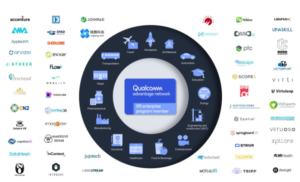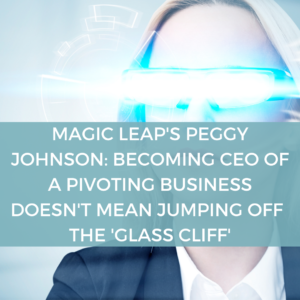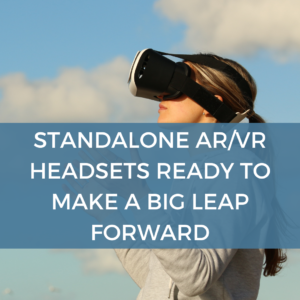Bellanger writes that, “Earlier this year, Magic Leap CEO Rony Abovitz resigned from the Augmented Reality headset company he founded in 2010. It was clear that the device his company had spent nearly a decade developing wasn’t viable for the consumer market, though it had previously been heralded the industry leader.
Abovitz’s departure came one month after the company had laid off one-third of its staff, following attempts to sell itself. While the move coincided with mass layoffs across the country owing to the coronavirus pandemic, some employees didn’t buy COVID as the root of Magic Leap’s immediate struggles, Bloomberg reported.
Despite the company’s uncertain future, when Peggy Johnson heard Abovitz was stepping down, she raised her hand for the job. At the time, she was Microsoft’s EVP of business development—she’d been one of Satya Nadella’s first hires—and she had experience with augmented reality, working with Microsoft’s HoloLens as well as Qualcomm’s Vuforia product (Qualcomm is also an AREA member – view their profile here).
“I had an ambition for a while to be a CEO, but I knew it needed to be the right fit for me,” Johnson told Fortune senior writer Maria Aspan along with attendees of Fortune’s virtual Most Powerful Women Summit on Thursday in her first interview since she assumed the role in August. “I had had a great run at Microsoft, and I loved it, but I just wanted to step into that role. When you look around, there are so few women CEOs, and even fewer in the tech industry. And I just wanted to take the reins and do it.”
HoloLens had a similar trajectory to Magic Leap. It was first envisioned as a gaming device, but because of its high price tag, it’s now targeted more toward business. Under Johnson’s leadership, that’s the direction Magic Leap is headed today.
Sensing trouble, when Johnson assumed the role, many onlookers used the phrase “glass cliff” to indicate the belief that Johnson was taking on leadership of a failing company and thus doomed to fail herself.
“I don’t worry at all about it,” Johnson said in response to these concerns. “And frankly, sometimes it’s exhausting that that word is put forward when a woman steps into a CEO job. I chose this. And I chose it because of all of the elements that were in place.”
Johnson listed Magic Leap’s device itself as well as its IP portfolios and “diverse, talented team” as elements she identified that would position the company for future success as it transitioned toward the enterprise space.
Now, in line with her business development background and drawing upon her 35-year career, Johnson says she’s focused on growing the company’s list of partnerships. Magic Leap is reportedly in talks with Amazon regarding implementing its cloud services, though Johnson did not discuss any developments with Fortune.
“What I’m focused on is ensuring we’re picking the right areas of enterprise to focus on,” she said, citing training, remote assist, and 3D visualization as the three primary use cases the company is zeroing in on. Given the rise of remote work owing to the COVID pandemic, Johnson says she sees promise for teams to meet virtually and review product designs.
For another example, far-flung diagnostics professionals may be able to help fix machinery: If a person on a factory floor is wearing a headset mounted with a camera and a screen, a remote worker can circle components and identify problems.
Meanwhile, Magic Leap is deploying its own technology to a similar end. It recently used augmented reality headsets to host a board meeting, providing the illusion that avatars of board members were seated inside Johnson’s home.
“They all showed up in the room behind me, in my library,” Johnson said. Amid the pandemic, “it felt finally, that emotional factor that you get in a physical meeting was back again.”










